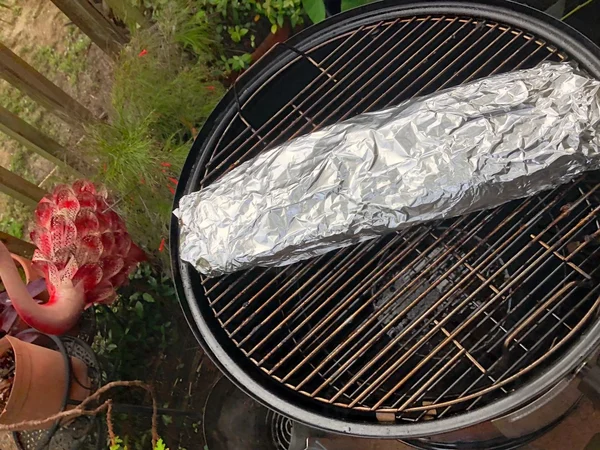Wrapping Ribs in Butcher Paper: A Guide to Achieving Perfect Barbecue
When it comes to barbecuing ribs, the choice of wrapping method plays a crucial role in achieving tender, flavorful results. While many pitmasters swear by aluminum foil, an alternative gaining popularity is wrapping ribs in butcher paper. This article will delve into the benefits of using butcher paper, step-by-step instructions for wrapping ribs, and tips for optimizing your barbecuing experience. Whether you're a seasoned pitmaster or a barbecue enthusiast looking to up your game, mastering the art of wrapping ribs in butcher paper is a skill worth acquiring.

Wrapping Ribs in Butcher Pape
1. Understanding the Benefits of Butcher Paper:
1.1. Retains Moisture and Enhances Bark Formation:
The porous nature of butcher paper allows the meat to breathe, preventing excessive moisture buildup and maintaining a perfect balance during the cooking process.
Wrapping ribs in butcher paper helps create a desirable crust or bark on the meat's surface, adding a rich, smoky flavor and improving overall presentation.
1.2. Promotes Tender and Juicy Ribs:
Butcher paper offers insulation and helps regulate heat, allowing the ribs to cook evenly and retain their natural juices.
The combination of moisture retention and gentle heat creates a favorable environment for collagen breakdown, resulting in tender, melt-in-your-mouth ribs.
2. Step-by-Step Guide to Wrapping Ribs in Butcher Paper:
2.1. Preparing the Ribs:
Select high-quality ribs and trim excess fat if desired.
Apply a dry rub or marinade of your choice and allow the flavors to penetrate the meat.
2.2. Preparing the Butcher Paper:
Cut a sheet of butcher paper large enough to wrap the ribs completely.
Place the sheet on a clean, flat surface and ensure it is free from any tears or holes.
2.3. Wrapping the Ribs:
Place the seasoned ribs in the center of the butcher paper, bone side down.
Fold one side of the paper over the ribs and tuck it under.
Fold the adjacent side over, overlapping the previous fold.
Continue folding and tucking until the ribs are securely wrapped.
2.4. Securing the Wrap:
To prevent the butcher paper from unraveling during cooking, use butcher's twine or aluminum foil to secure the wrap.
Tie the twine around the wrapped ribs or fold the excess paper underneath to keep it in place.

Wrapping Ribs in Butcher Pape
3. Optimizing the Barbecuing Experience:
3.1. Temperature and Cooking Time:
Maintain a consistent temperature throughout the cooking process to ensure even cooking.
Monitor the internal temperature of the meat using a meat thermometer and adjust cooking time accordingly.
3.2. Resting the Ribs:
After cooking, allow the wrapped ribs to rest for 10-15 minutes to allow the juices to redistribute and the flavors to settle.
3.3. Unwrapping and Finishing Touches:
Carefully unwrap the ribs, being cautious of hot steam and juices.
If desired, return the unwrapped ribs to the grill or smoker to enhance the bark and achieve a crispy exterior.
Wrapping ribs in butcher paper provides a fantastic alternative to aluminum foil, allowing you to achieve outstanding results in your barbecuing endeavors. With its ability to retain moisture, enhance bark formation, and produce tender, juicy ribs, butcher paper has gained popularity among barbecue enthusiasts and professionals alike. By following the step-by-step instructions provided and optimizing your barbecuing experience, you'll be well on your way to mastering the art of wrapping ribs in butcher paper, elevating your barbecue game to new heights. So fire up your grill, grab some quality butcher paper, and get ready to indulge in barbecue perfection.